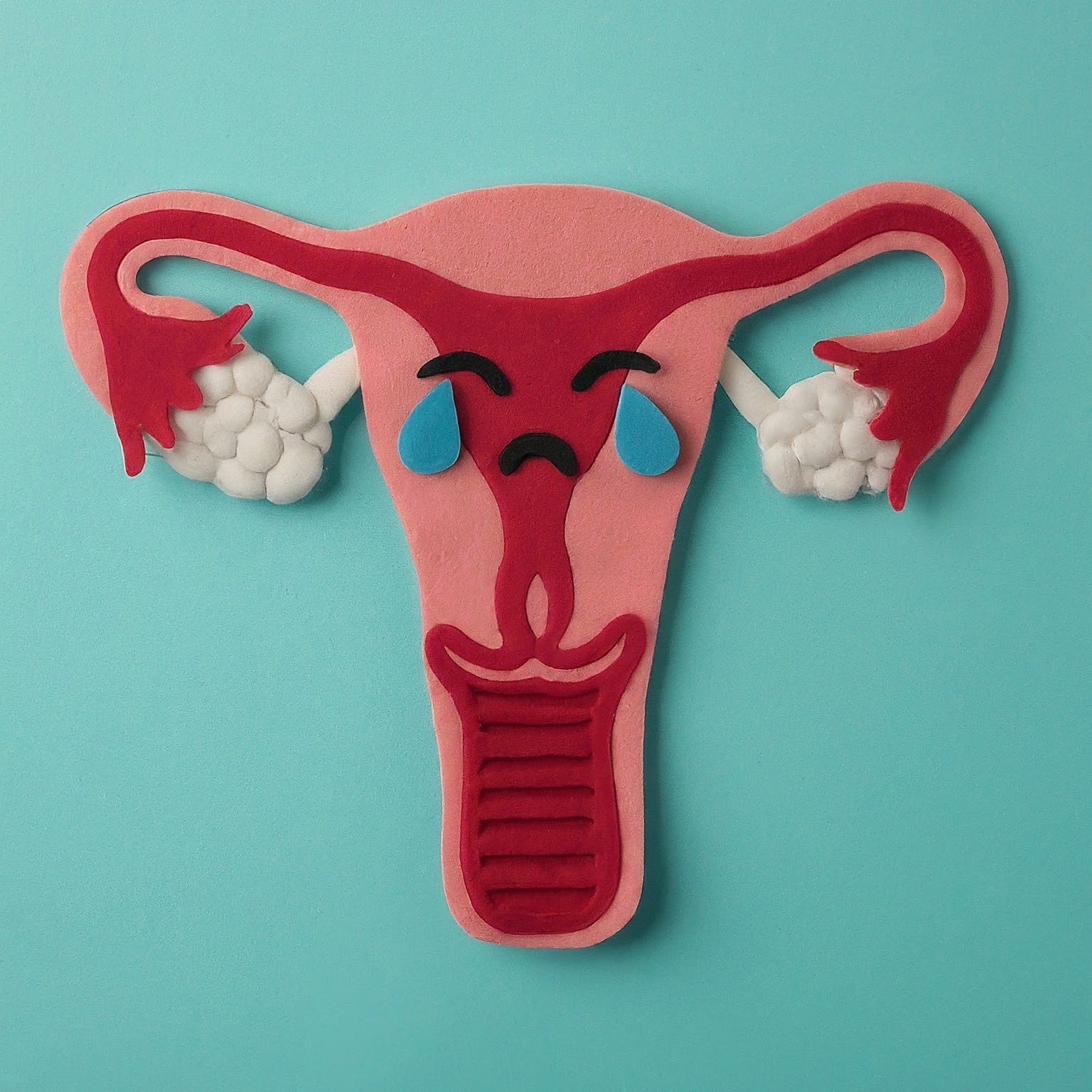The differences and similarities between Endometriosis and Adenomyosis

The endometrium is the tissue inside the uterus that you shed during your menstrual periods. When tissue similar to the lining of the uterus grows in places it shouldn’t, you can have similar but separate conditions called endometriosis and adenomyosis. They may affect the same or different parts of your body, share some symptoms, and require different treatments.
It is estimated that more than 10% of Australian women have endometriosis and around 70% of patients presenting to Flinders Fertility probably have some degree of endo.
There is often an overlap, and you can have endometriosis and adenomyosis problems simultaneously.
How are they defined?
Outside vs Inside
One way to differentiate endometriosis from adenomyosis is to look at where the rogue endometrial tissue grows. Endometriosis is where endometrial-type tissue (typically ‘fibrotic’ or scarred) starts growing outside the uterus. These growths or lesions can attach to various places in your pelvis, like your ovaries or fallopian tubes. What's tricky is that they react to your hormones just like your uterine lining does, causing pain, inflammation, and commonly scar tissue to form. While experts aren't completely sure why endometriosis happens, genetics and immune system factors might play a role.
Adenomyosis, on the other hand, happens when the same kind of cells that line the uterus also grow deep in the muscular wall of the uterus and thicken it. It doesn’t go past the uterus itself.
Signs of Endometriosis
- Pain: You might experience pelvic pain before and during your period, during sex, or even when you're using the bathroom.
- Period Troubles: Heavy or irregular bleeding during your period is more typically a sign of adenomyosis, but pre-menstrual spotting is common with endometriosis.
- Fertility Issues: If you're having trouble getting pregnant, endometriosis could be affecting your reproductive organs.
- Digestive Discomfort: Sometimes, you might feel bloated, or have diarrhea or constipation, especially around your period. Many women who turn out to have endometriosis have been told they have irritable bowel syndrome.
- Tiredness: Dealing with chronic fatigue due to ongoing inflammation isn't uncommon.
Diagnosing Endometriosis
Currently, the only sure way to diagnose endo is by laparoscopy, which is usually done as keyhole surgery. This allows your doctor to see and biopsy the suspicious tissue directly. Ultrasound is often used and there have been some promising developments, However, it's common for endo to be hidden so if you have had ultrasounds with a negative result but still have symptoms, you may need to consider surgery for a definitive diagnosis – and, of course, surgical removal at the same time.
The impact of Endometriosis on Fertility
There is a strong link between the extent of endometriosis and infertility. Even in milder cases, it can take twice as long to achieve a pregnancy than someone without mild endo, so we recommend that if you suspect you have endometriosis you plan ahead of time if you are thinking of having a family.
Treatment for Endometriosis-related pain and infertility
While there isn’t a cure, the focus tends to be on pain management and improving fertility. We recommend EndoRelief, a TGA-approved non-hormonal, multi-nutrient formulation designed to help relieve menstrual pain and support inflammatory balance.
For fertility, there is good evidence for a treatment colloquially known as a lipiodol ‘flush’ (but more aptly described as Lipiodol uterine bathing and tubal flushing). This is a procedure where Lipiodol (poppy seed oil) is gently instilled into the uterus and fallopian tubes using a fine catheter, guided by an x-ray. This procedure is similar to the hysterosalpingo-contrast-sonography (HyCoSy) and hysterosalpingogram (HSG).
Flushing the uterus and tubes with Lipiodol has been shown to improve fertility in women with endometriosis and unexplained infertility in the 6 months following treatment. Lipiodol is believed to have an immunobiological effect on the endometrium to make it more receptive to implantation. While lipiodol and intrauterine insemination (IUI), and even laparoscopic surgery, can all improve fertility, in vitro fertilisation (IVF) remains a very effective treatment for endometriosis-related infertility.
Understanding Adenomyosis
Adenomyosis is a slightly different disease. Here, the lining of your uterus grows into the muscular wall. Your uterus might swell up, feel tender, and even change shape due to this condition. Like endometriosis, adenomyosis also reacts to hormone changes, making your periods more painful and uncomfortable.
Signs of Adenomyosis
- Painful Periods: If you experience intense and long-lasting period cramps, adenomyosis might be the cause.
- Heavy Flow: Are your periods super heavy and filled with clots? That's another clue.
- Bigger Uterus: Your uterus might feel larger and tender when you touch it and it may protrude giving you a ‘pregnant belly’ look
- Sexual Discomfort: Pain during sex could be linked to adenomyosis.
- Digestive issues: Just like with endometriosis, digestive issues might occur too.
Diagnosing Adenomyosis
This can be tricky, as adenomyosis can seem like other conditions. We would generally recommend an ultrasound or MRI to get a clearer picture of your uterus and its changes.
In a Nutshell
While endometriosis and adenomyosis can seem similar, they have their unique features. If you have any of the symptoms mentioned, do ask your GP to refer you to a gynaecologist or if you are looking to conceive, a fertility specialist, and they can guide you through understanding your symptoms, and planning the best way to make you feel better and support your plans for a family.
Clinical review by Prof Neil Johnson CREI

